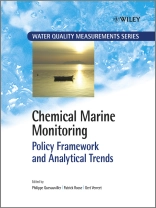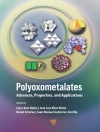Wide- scale chemical monitoring programmes are required by
international conventions and European Union policies such as the
Water Framework Directive (2000/60/EC) and the new EU Marine
Strategy Framework Directive (MSFD). This entails all waters,
including transitional and coastal waters, sediments and biota.
The final volume in the Water Quality Measurement
Serieshighlights policy frameworks and analytical trends with an
emphasis on laboratory methods and quality control.
Within this comprehensive text, the following sections are
included:
* Setting the Scene; monitoring of pollutants
* Policy Settings; international conventions and EU marine
strategy
* Marine monitored parameters; trace elements, chemical species,
organic micropollutants, and nutrients
* Types of monitoring; classical chemical monitoring,
biomonitoring and in-situ methods
* Quality assurance; certified reference materials for marine
monitoring
* Research and developments; the role of sediments in coastal
monitoring, and passive sampling technologies
Chemical Marine Monitoring: Policy Framework and
Analytical Trends is intended for postgraduates and researchers
working in analytical chemistry and its application to
environmental and health analyses. Those interested in developing
new methods and materials in relation to drinking water regulations
with also find this book beneficial.
विषयसूची
Series Preface vii
Preface ix
The Series Editor – Philippe Quevauviller xi
List of Contributors xiii
PART 1 SETTING THE SCENE 1
1 Monitoring of Pollutants: A Historical Perspective for the
North-East Atlantic Region 3
Kees J.M. Kramer
PART 2 POLICY SETTINGS 29
2 International Conventions 31
Patrick Roose
3 EU Marine Strategy 49
Gert Verreet
PART 3 MARINE MONITORED PARAMETERS, MATRICES AND RELATED
TECHNIQUES 69
4 Trace Elements 71
Martin M. Larsen, Jens Søndergaard, Gert Asmund,
Koen Parmentier, and Peter Vermaercke
5 Chemical Species 101
David Amouroux, Fabienne Seby, Mathilde Monperrus, Florence
Pannier, Carolina Mendiguchia, Christelle Benoit-Bonnemason, and
Olivier F.X. Donard
6 Organic Micropollutants 161
Robin J. Law, Lynda Webster, Norbert Theobald, Heather S.
Rumney, and Jacob de Boer
7 Nutrients 197
Carlos Rocha and Malcolm Woodward
PART 4 TYPES OF MONITORING 223
8 Classical Chemical Monitoring of the Marine Environment
225
Colin F. Moffat, Lynda Webster, and Rob Fryer
9 Biomonitoring 261
Michael Haarich
10 Use of In-Situ Methods 285
Richard Greenwood, Graham A. Mills, Gary R. Fones, and Kees J.M.
Kramer
PART 5 QUALITY ASSURANCE 313
11 Certified Reference Materials for Marine Monitoring
315
Francesca Pellizzato, Evin Mc Govern, and Philippe
Quevauviller
PART 6 RESEARCH AND DEVELOPMENTS 375
12 The Role of Sediments in Coastal Monitoring 377
Gra.zyna Kowalewska, Maria J. Belzunce-Segarra,
Birgit Schubert, Peter Heininger, and Susanne Heise
13 Passive Sampling Technologies 397
Graham A. Mills, Gary R. Fones, Kees Booij, and Richard
Greenwood
PART 7 CONCLUSIONS 433
14 Conclusions and Outlook 435
Gert Verreet, Patrick Roose, and Philippe Quevauviller
Index 439
लेखक के बारे में
Philippe Quevauviller has published more than 200 papers and several books linked to environmental quality measurements. He joined the Research General-Directorate of the European Commission in 1989 where he was scientific officer on topics dealing with the quality control of environmental analysis. Since 2002, he has integrated the Water & Marine Unit of the EC Environment Directorate-General where is now responsible for the development of a new Groundwater Directive which will complement the existing water policy framework. He is part-time professor at the K.U.Leuven where he teaches ‘water quality and treatment’ in an Interuniversity programme on Water Resources.












